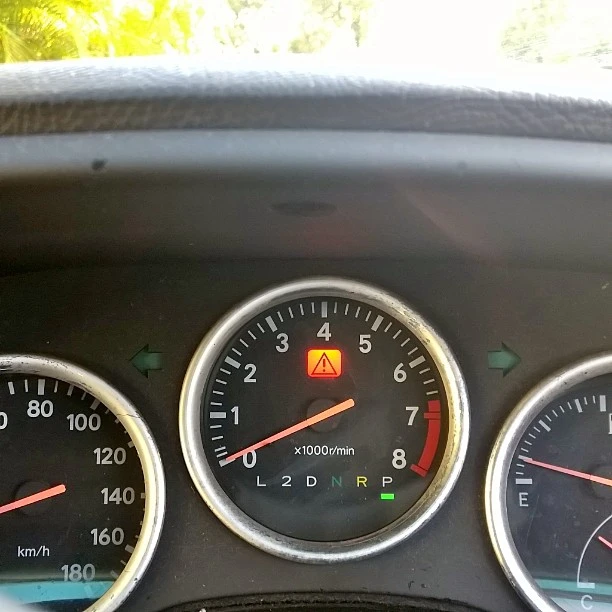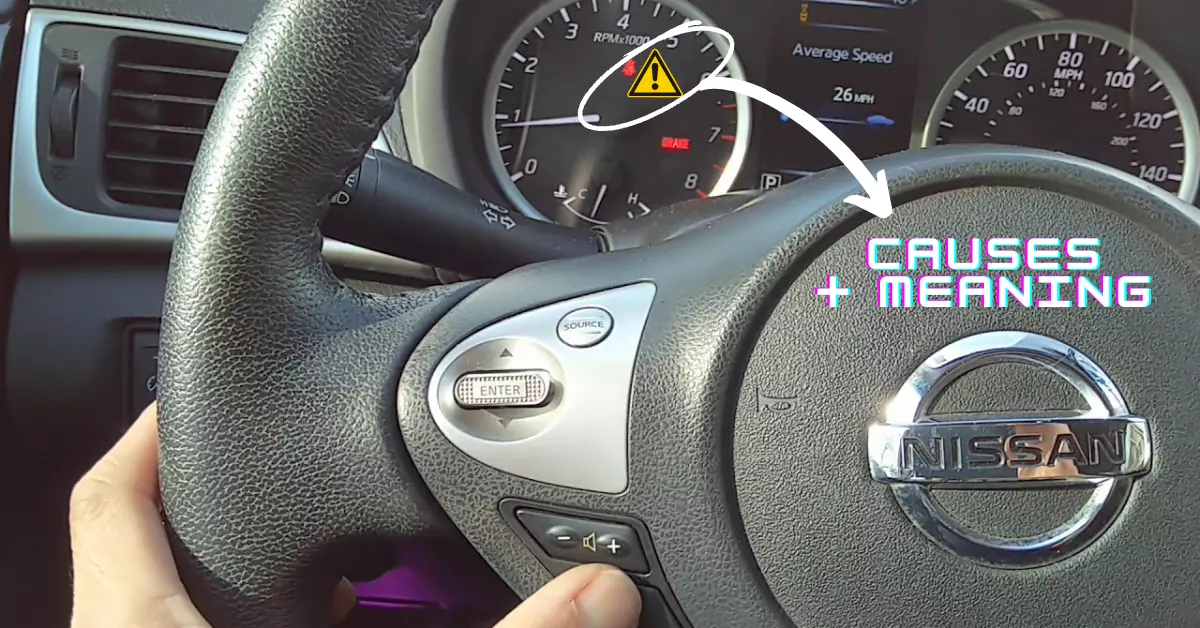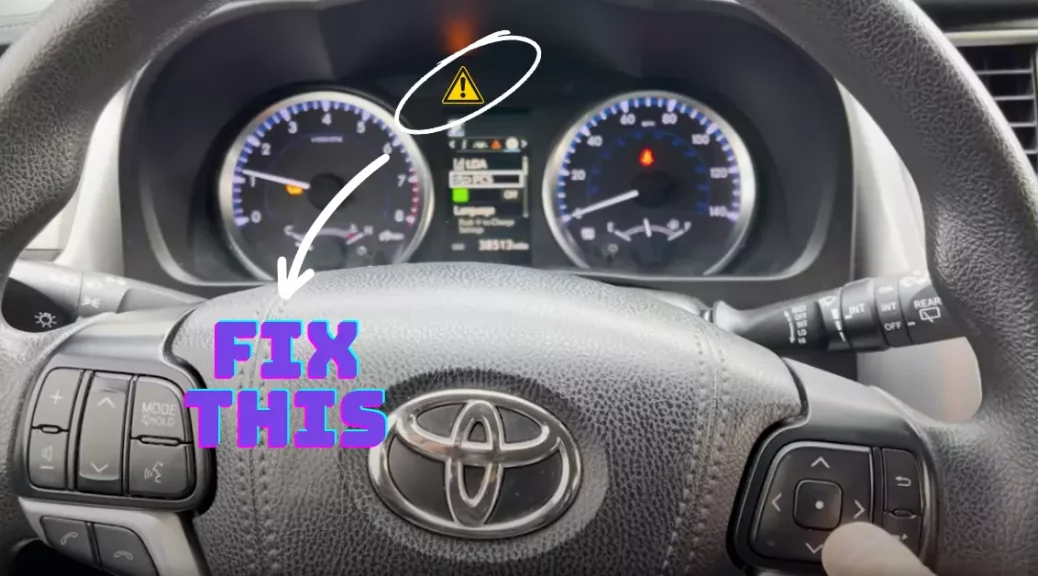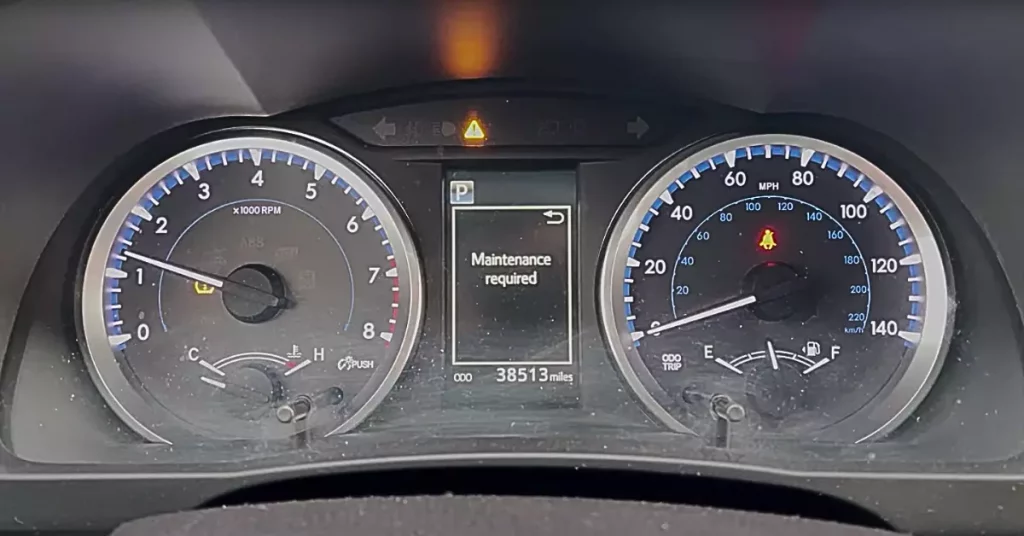Out of all the warning lights you may see on your Nissan’s dashboard, the master warning light is usually not something to be desperate about. Firstly, it may not be a fault at all, but a condition, such as an open door. More importantly, the car will often display a supplemental message with the details of the error. In this article, we’ll take a look at the different variants of the Nissan master warning light, its causes, and the fixes of this orange triangle with an exclamation point in Nissan cars.
Nissan Master Warning Light Symbol
Nissan car owners will recognize the master warning light by its triangular shape, with an exclamation mark in the center. The master warning light should illuminate in combination with other lights that point to an issue on a specific system, or show up with an explanation message.
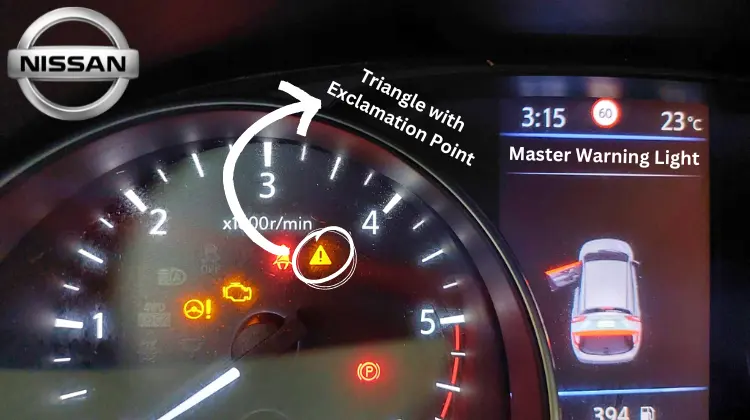
There are several colors in which warning lights display on Nissan, with the most important ones being:
- Red: These lights should get your attention and typically need to be addressed immediately: however, some of them don’t indicate a fault, but a condition, such as the parking brake is applied.
- Yellow: Usually indicates faults on systems such as the ABS, parking brake, powertrain, or low tire pressure, among other conditions.
- Other: A green, blue, or white symbol light indicates that a given system is on (for example, high beam assist or fog lights).
The master warning light usually shows up in a red or yellow triangle with an exclamation point in Nissan cars. The cause and meaning of the warning light vary based on its color. The causes will vary from model to model and on different generations; consult your owner’s manual for info specific to your model.
Causes For The Master Warning Light On Nissan – Red

A red master warning light on Nissan may indicate some of the following:
- An engaged parking brake
- A warning from the transmission system
- Steering wheel hands-on detection warning
- An open door
- On some electric Nissan cars, in case of a DC/DC converter issue, together with the battery warning light
The following steps may help with the listed issues:
- Check whether the parking brake is engaged. Release the parking brake before driving. If the light is on while the parking brake is disengaged, check for issues with the parking brake.
- Check the current position of the shifter. If the car is parked, engage the parking brake. Check for issues in the transmission system.
- Don’t take your hands off the steering wheel while driving! If the Steering Assist is faulty, it should automatically turn off. If there’s a fault with the steering assistance or any of its functions, have your car checked.
- Latch all doors before driving.
- Don’t drive if there is a battery warning while the car is running – it means that your battery is discharging. Have your car checked by a qualified electrician.
Causes For The Master Warning Light On Nissan – Yellow

While yellow warning lights typically aren’t as alarming as red ones, they shouldn’t be ignored. Possible causes include:
- A low fuel level
- No keys detected
- Low windshield washer fluid level
- A loose fuel cap
- Low tire pressure
- Open trunk
- An open door (when stopped)
- 4WD error, on models that have 4WD
The troubleshooting for most of these causes is simple:
- Top up fuel levels.
- Make sure the keys are not too far away from the car. If the car still doesn’t detect the keys, there may be an issue with the key or within the car.
- Top up windshield washer fluid.
- Screw the fuel cap on correctly after refueling.
- Inflate the tires up to the recommended pressure.
- Latch the trunk and all the doors before driving.
- The 4WD has many components which could be at fault, from any of the sensors to the control unit– consult a trusted repair shop.
Meaning of Exclamation Point Inside of a Triangle In Different Nissan Vehicles

The red or yellow triangle with an exclamation point serves as a common indicator across all Nissan vehicles.
Here are some likely causes you should watch out for in various Nissan models:
Nissan Altima
A loose fuel cap is a common cause of this occurrence. Another common reason is leaving the headlights on when exiting the vehicle. Make sure the headlights are off after leaving the vehicle, as they can drain the battery over time.
Nissan Rogue
The master warning light in Nissan Rogue is typically triggered by two main issues: power steering problems and overheating within the AWD system.
Nissan Qashqai
The triangle malfunction light in Nissan Qashqai usually indicates that the fuel level is nearing empty. Also, a convenient feature of the Qashqai is that it accompanies the triangle symbol in conjunction with an error message in the message center, providing clear and concise information about the issue at hand.
Nissan Sentra
The warning malfunction indicator light commonly activates when Sentra is low on gas or has a missing or improperly tightened fuel cap.
Nissan Pathfinder
The exclamation point inside of a triangle in Nissan Pathfinder usually means there is an overheated all-wheel drive system.

Nissan Murano
The triangle warning dashboard light serves as a broad indicator that something requires attention or troubleshooting in the Murano.
Nissan Kicks
The blinking master warning light indicates an emissions control malfunction. This means a problem or issue with the components responsible for managing and reducing harmful exhaust emissions in the Nissan Kicks.
Nissan Maxima
The exclamation point symbol typically indicates low tire pressure.
Nissan 370z
Nissan 370Z is a sporty and performance-oriented car model known for its power and handling capabilities.
In Nissan 370Z, the master warning light illuminates due to:
➜ No key warning: Indicates that the key is not detected or is not within the range for starting the vehicle.
➜ Low fuel warning: Alerts the driver that the fuel level is running low and requires refueling.
➜ Low washer fluid warning: This indicates that the windshield washer fluid level is low and needs to be replenished.
➜ Parking brake release warning: Reminds the driver to release the parking brake before driving.
➜ Door/rear hatch open warning: Notifies the driver if any of the doors or the rear hatch is open, ensuring they are closed properly for safe operation.
FAQs
What To Do When The Master Warning Light Comes On In Your Nissan Vehicle?
Your course of action depends on the cause. After checking all the essentials, such as the doors and the trunk, and making sure there is enough fuel, the warning should be gone, and you can drive on as usual.
However, if the warning shows up with another error light that indicates a deeper issue, it’s best to get your car diagnosed and repaired by a professional. Some issues, like a burst tire, may make it unsafe to keep driving; in that case, stop at a safe place as soon as you can.
How to Perform A Nissan Master Warning Light Reset?
The Nissan master warning light should never be manually reset without prior diagnostics. It’s because it is designed to alert the driver to potential issues with their vehicle.
If the error causing the warning light is not resolved and you manually reset the light, it will temporarily turn off but will activate again once the engine detects the same issue.
To reset the Nissan master warning light, you can use any compatible diagnostic software; for a simple reset, a simpler, universal tool should also work. Only erase DTCs after the issue has been resolved.
If you decide to reset the car by disconnecting the battery terminal, keep in mind that this may also undo your clock settings, and infotainment system settings, and, in older vehicles, it may reset the fuel trip as well. Therefore, be prepared to reconfigure these settings after the reset.
Can the Master Warning Light Reset Itself?
Typically, the master warning light will automatically reset only when the underlying issue that triggered the light has been resolved.
However, sometimes a “history” DTC will be left after the underlying cause is resolved. These DTCs indicate a fault that is not present at the moment, and once erased, the light will go off.
Conclusion
There isn’t one definitive reason the master warning light illuminates in Nissan cars. And this triangle with an exclamation point inside is usually accompanied by further warning lights and/or display info. The two variants, red and yellow, differ in meaning and severity. The causes for the triangle light range from something as simple as a loose fuel cap to more complex issues that require a professional inspection.
